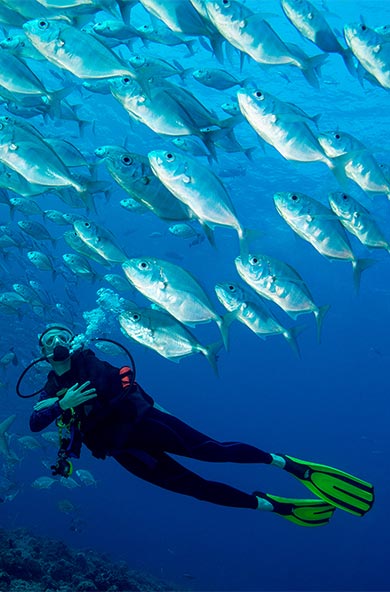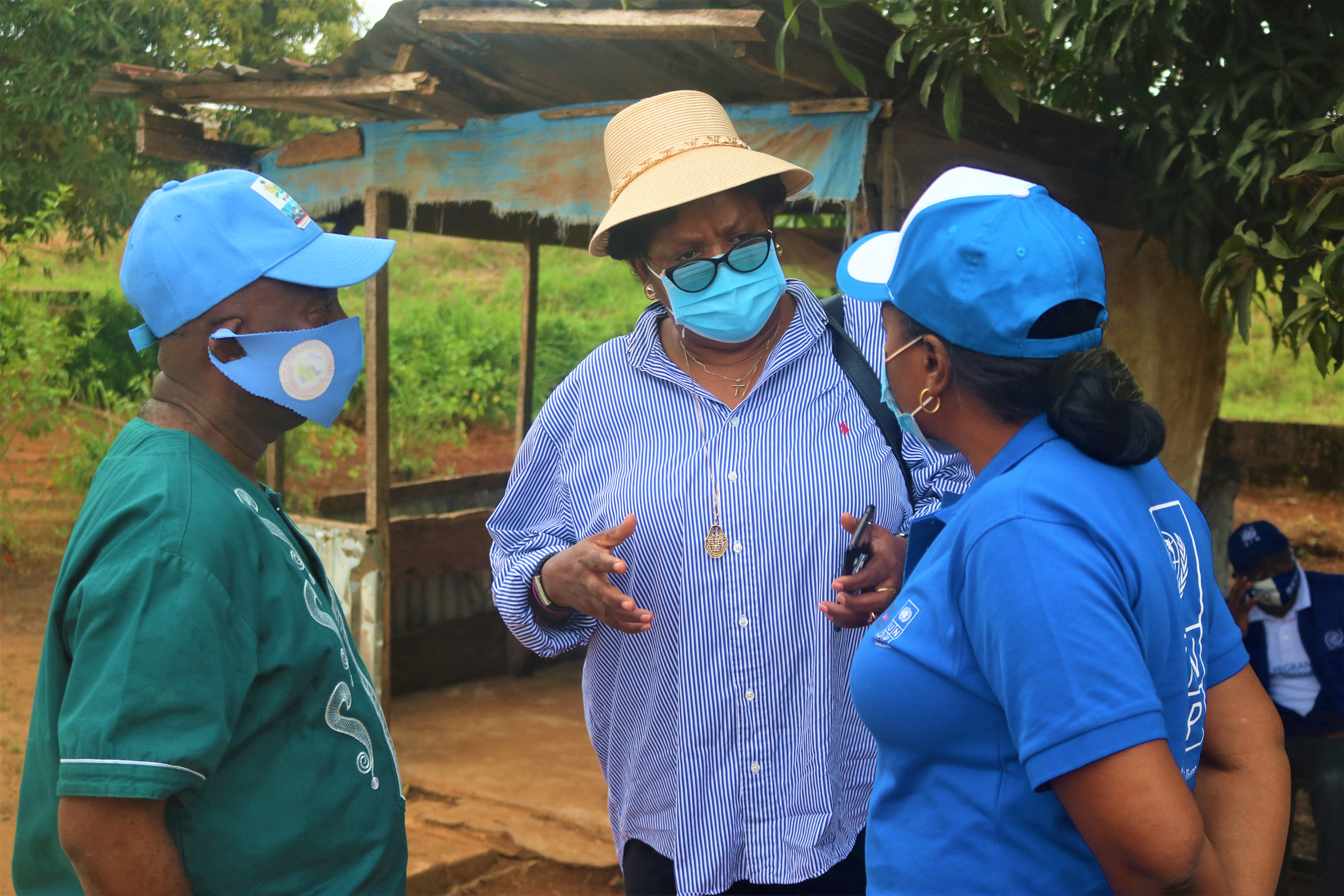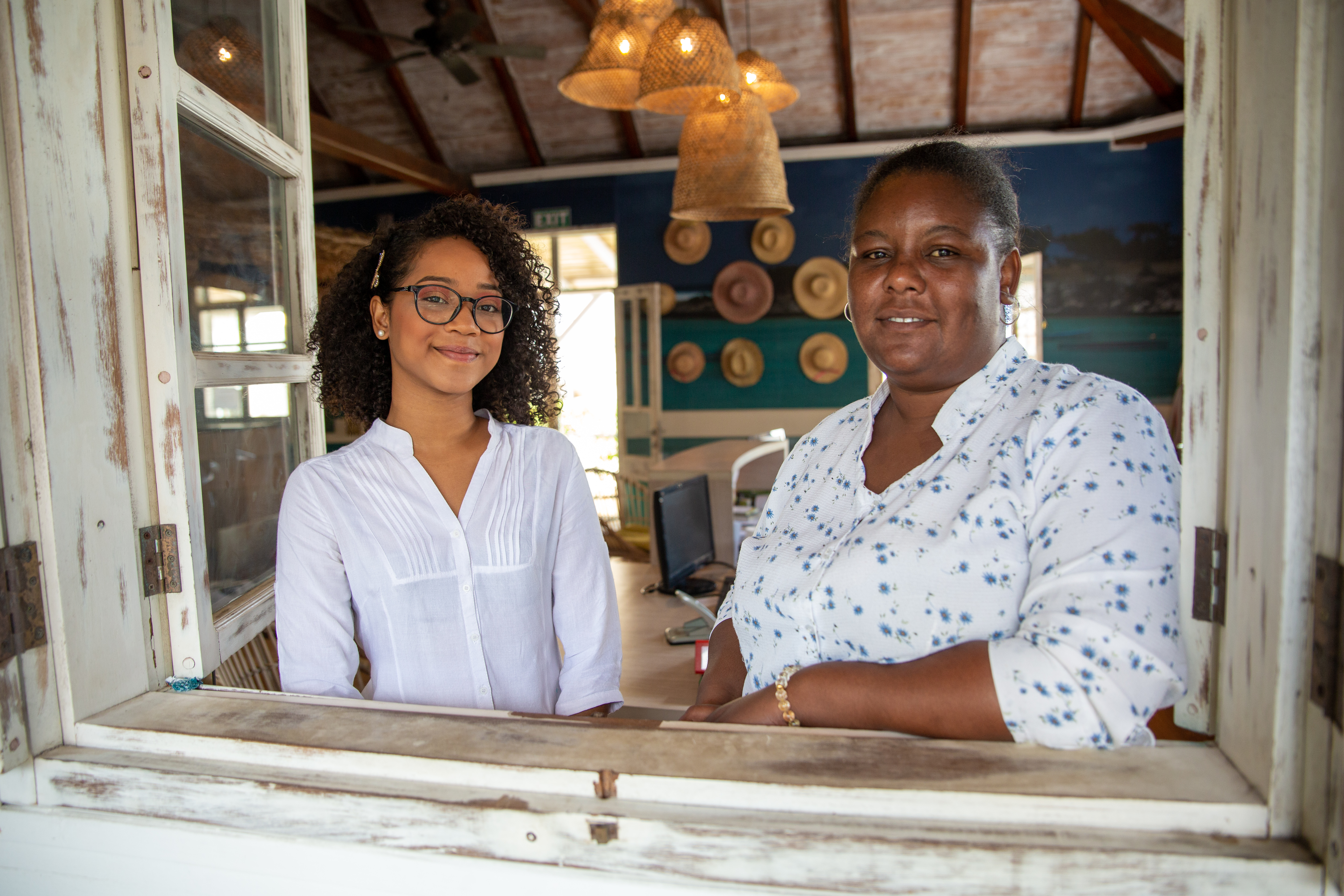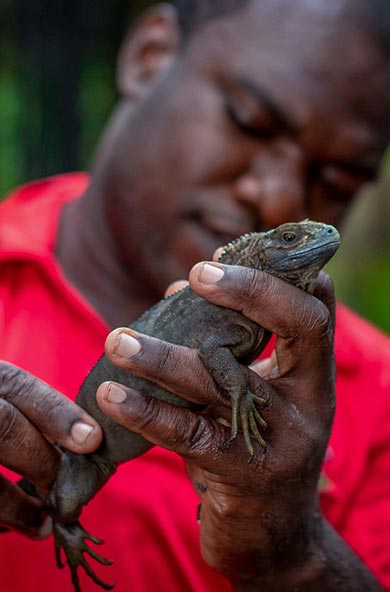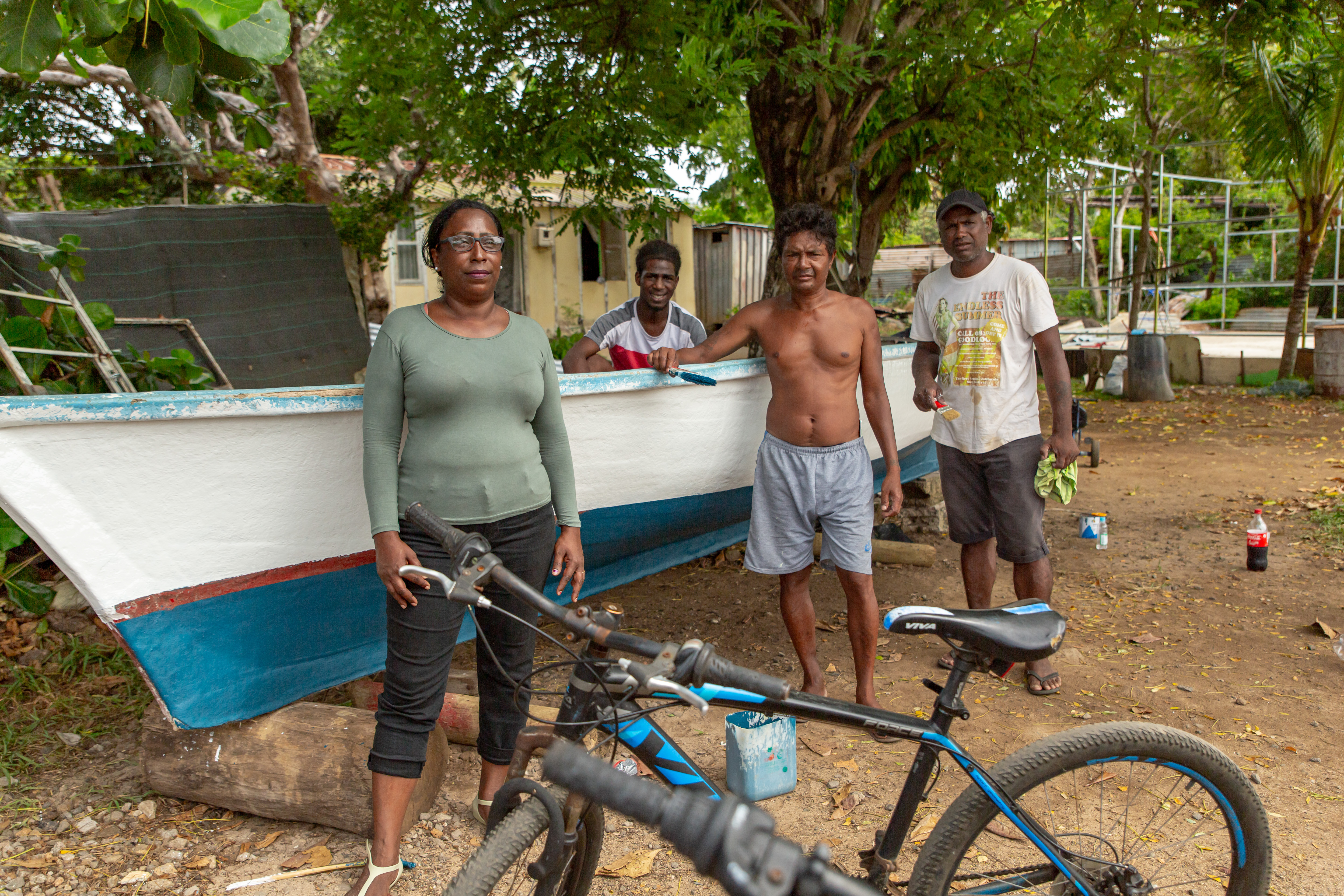A new UNDP-GEF project aiming at safeguarding globally significant biodiversity in vulnerable ecosystems through the prevention, control, and management of invasive alien species (IAS) has been launched recently
The Echo parakeet, an endemic bird species, is threatened by the circovirus beak and feather disease caused by a foreign micro-organism. Photo courtesy: Mauremootoo
Since colonization in the 17th century, Mauritius was not spared by the loss of natural habitat and the extinction of several animal species. Today the island, which has one of the most threatened island biodiversity, still hosts some of the most unique, rare, and threatened animals and plants on the planet, and they need to be protected. Through the recently launched GEF-UNDP Mainstreaming Invasive Alien Species (IAS) Prevention, Control and Management project, new measures have been set to protect these unique species from a major threat: Invasive Alien Species.
The arrival of human beings and its consequences for the biodiversity of the island
Mauritius was formed by underwater volcanic eruptions 8 million years ago. Animals and plants reached the shores of the island from surrounding landmasses by flying, swimming, “hitchhiking” across the sea on floating vegetation or by being carried by the wind. Isolated from their mainland relatives, these newcomers have evolved into distinct species now considered to be unique or “endemic” to the island.
With the arrival of human settlers, the natural resources of the island were exploited for settlement, agriculture and trade, leading to the decline of natural ecosystems and to the extinction of unique species such as the famous Dodo. From the beginning of colonization to our present times, people have also caused the deliberate or accidental introduction of foreign animals, plants and micro-organisms, which have in turn become threats to the endemic species. More than 1,675 plant species have been introduced in Mauritius, of which 20 have been identified as particularly aggressive invaders. The worst species include Chinese Guava, Privet and Liane cerf. These species out-compete native plants for space, light and nutrients, and quickly come to dominate the forest throughout the island.
Another pathway for IAS introduction in Mauritius is through Ballast Water and Biofouling. The previous National Invasive Alien Species Strategy and Action Plan (NIASSAP) 2009-2018 recognised ballast water as the most probable entry point for marine IAS into the national territory. Non-native marine species increased from 15 to 25 between 2009 and 2013, with ten of the new species being a cause for concern with respect to possible further spread and impact.
Rs 160 M of agricultural produce is lost annually due to fruit flies. Photo: Rafael Winer@UNDP Mauritius
Mauritius’ natural ecosystems and unique biodiversity at risk
IAS have contributed to the extinction of 100 native species in Mauritius. Today, they are the most serious threat to the island’s endemic biodiversity. In addition to numerous foreign plants, at least 21 introduced species of mammals, reptiles and mollusks are considered as invasive. The black rat, the brown rat, the Javanese macaque, the feral pig, the Javan deer, the goat and the wild cat are some of the invasive mammals introduced from the beginning of the colonization of the island.
More recent introductions include the Madagascar giant day gecko and the gold-dust day gecko which are threats for our endemic lizards, the Phelsuma and the Nactus. Alien species can also be found in Mauritian freshwater ecosystems with potential negative impacts. Rivers are invaded with introduced fish species such as the Poeciliidae and one Cichlidae.
A major threat to the economy, environment, and society
Coupled with human-induced land degradation, IAS contribute to the reduction of the ecosystem services provided by our native forests, affecting their contribution to economic development. The negative impact of IAS also touches the sugar industry and the agricultural sector, thus being a risk for food security. While the Aphthovirus is responsible for Food and Mouth Disease (FMD) in Livestock, pests such as fruit flies cause damage to fruits and vegetables. It is estimated that Rs 160 M of agricultural produce is lost annually due to fruit flies.
Some IAS can also be vectors of diseases for both wildlife and humans. Crude examples are the circovirus psittacine beak and feather disease which affects our endemic Echo parakeet and Pink Pigeon; and Chikungunya, a viral disease transmitted to humans by infected mosquitoes.
Protected endemic species include birds, reptiles, insects, and plants.
Consolidating the response to IAS
Despite serious threats posed by IAS to the biodiversity, health, and economy in Mauritius, actions undertaken to manage their impact have been reactive and piecemeal, and driven by the perceived needs of individual sectors. However, IAS should not be considered as the responsibility of a single Ministry or Department, as the problems they cause cut across many economic sectors, including public and private stakeholders. As with other aspects of biodiversity conservation, addressing this specific problem requires efficient collaboration between the relevant institutions. With the increase in the number of vessels and visitors arriving in the Republic of Mauritius, public and private stakeholders need to work together to tackle this already challenging issue and prevent it from worsening.
The GEF-UNDP Mainstreaming Invasive Alien Species (IAS) Prevention, Control and Management project, aims at safeguarding globally significant biodiversity in vulnerable ecosystems through the prevention, control, and management of invasive alien species (IAS) in the Republic of Mauritius. Three impact pathways have been identified in the project to achieve this objective:
1. Creating the policy and institutional frameworks needed to secure ecosystem goods and services under pressure from IAS. This includes the setting up of enabling environments (policies, institutional coordination) for mainstreaming IAS prevention, control and management.
2. Establishing a multi-tier strategy for effective tackling of IAS - encompassing improved preventive measures at points of entry into the country and inter-Islands, early detection, and rapid response programmes to eradicate new incursions. The strategy also includes improved capacity to upscale proven methodologies for managing IAS on a landscape level.
3. Up-to-date information for raising public awareness and enhancing understanding of the importance of IAS programmes for protecting biodiversity, ecosystems, the economy, and livelihoods. It ensures that knowledge management supports monitoring, assessment and learning and forms the basis for adaptive project implementation, achievement of results, impacts, and upscaling of experiences in the Republic of Mauritius and in the region. This will ensure that the interventions of the project inform and influence the behaviours of a wider IAS constituency.
Psidium cattleyanum - often called "Chinese guava" is a threat for our forests, and limiting its propagation requires significant efforts. Photo: Rafael Winer @UNDP Mauritius
Finding a sustainable and holistic approach for both terrestrial and marine ecosystem conservation is a must if we are to preserve them for future generations. As the National Invasive Alien Strategy for the Republic of Mauritius (2009-2018) document states, “If this challenge is not met, then increasing mobility, greater volumes of trade and the growing complexity of transport networks are sure to result in increasingly severe IAS impacts in the Republic of Mauritius in the near future. Business as usual – an uncoordinated, reactive and ad hoc approach - will prove to be much more costly to the Mauritian economy, environment and society than the coordinated and comprehensive approach outlined in this Strategy.”

 Locations
Locations
